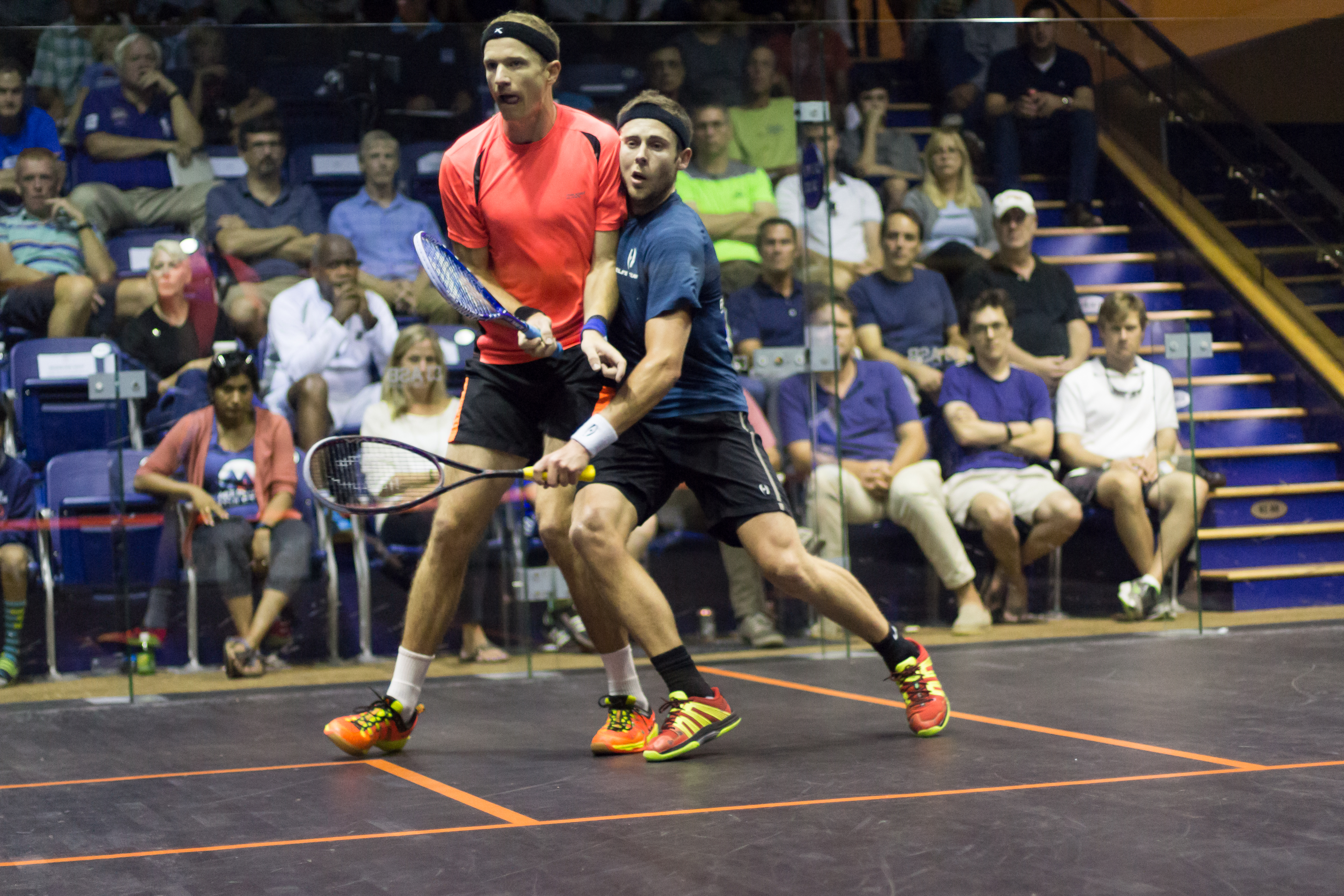HEY REF I’ve heard the term “wrong footing” used with interference situations. What are we supposed to do when it happens?
We often see this issue of wrong footing misinterpreted and wind up with unfair decisions. The term wrong footing describes a situation where the striker mistakenly takes the wrong path to get to the ball (usually because of a bad guess or being fooled). There is no ill intent involved; the striker has made an honest mistake, but as a consequence, when changing direction to recover from the mistake, the striker now finds the opponent in the way. Such actions are not to be considered as “created interference.”
This is entirely different from situations where the striker takes the wrong access deliberately, intending to artificially generate interference and request a let (usually trying to generate a cheap stroke or trying to avoid having to go get a difficult return or trying to get a break because of fatigue). All of these, of course, are cheating; such actions are commonly known as created interference. Thankfully, they are relatively rare. They are not to be considered as wrong footing.
The key thing to remember is that the simple existence of wrong footing during an interference situation changes nothing to your thinking process; you need give it no special consideration. As for any access interference situation, you must determine:
- If it involved significant interference, and
- If the striker was making a good effort to recover and get to the ball, and
- If a good return was possible had the interference not occurred.
With wrong-footing situations, any of the usual three decisions are available to you. However, with true, created interference situations, only a “No Let” is possible—simply because it’s cheating.
We cannot hold against the non-striker the fact that he/she is now in the way and has not made an effort to clear for the striker’s recovery—given that it was the striker who made the mistake. The exception to this would be when the amount of wrong footing by the striker is essentially quite small, say a few inches—such that the non-striker would have been in the way of the striker’s direct access in any case.

HEY REF In the heat of battle, I often get flustered when giving explanations for my decisions. I’ve seen some refs simply refuse to give explanations and tell the players to play on. Is that the best thing to do?
No—not initially. Giving an explanation can be very helpful for a number of reasons. It demonstrates respect for the player—in contrast to automatically dismissing the player with an immediate “Play on!”It helps clarify your standards for that type of situation—which should help if a similar case arises again. Lastly, properly given, an explanation demonstrates that you are aware of the right interpretation of the rules.
The rules allow for explanations—but that’s not a license for arguments or prolonged discussions; civility must prevail. Once a player has received an explanation (liked or not), then he/she is expected to play on.
In terms of the explanations themselves, it is not exaggerating to claim that far too many are either flat out wrong, incomplete, irrelevant, or nonsensical—all of which contributes to the getting flustered problem. Prevention starts with a two-pronged approach:
- Developing a good grasp of proper rules interpretation (see squashmagazine.com).
- Use of standardized explanations (see worldsquash.org).





